As an airport manager, and on behalf of airport management all over the country, I wanted to take a moment and say thank you! If you have flown commercially recently, then this message of gratitude is specifically for you.
Why?
Well, because you are directly contributing to the financial well-being of the airport. And no, I am not talking about supporting the airlines, who in turn pay the airport to offer their services. And I am not referring to your purchase of concessions in the terminal before your flight, or the fee you paid to park, or for gazing at the advertising that companies pay the airport top dollar for.
Rather, I am talking about a nominal fee that is applied to your ticket that goes directly into the airport’s coffers. This fee is the “Passenger Facility Charge” or PFC, and it’s a huge lever in commercial airport infrastructure investment.
It is also a white-hot topic nationally for airports and airlines, as the Federal Aviation Administration (FAA) approaches the end of its temporary authorization in March of 2016.
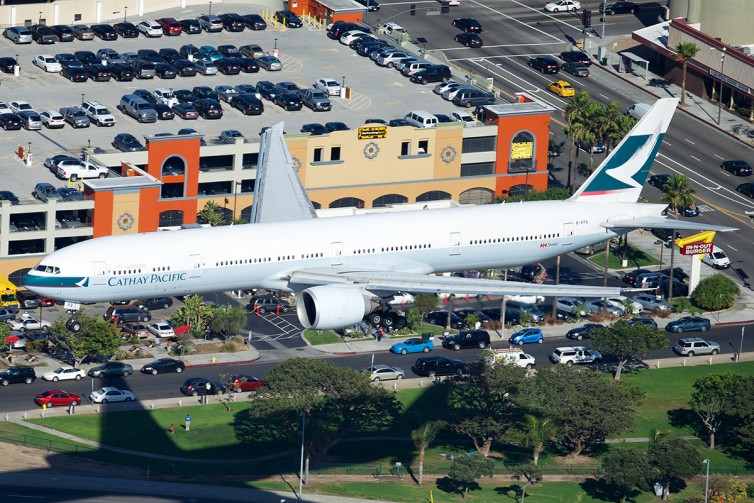
Cathay Pacific loves the 777, but might need something larger – Photo: Bernie Leighton | AirlineReporter
The PFC is a fee that is automatically applied to the purchase of airfare that airlines collect on behalf of the airport where the flight is originating. The airlines, in turn, transfer this money over to the airport, minus a small collection fee. The current fee is $1, $2, $3, $4, or $4.50 per flight segment, not to exceed $9 for a one-way trip or $18 for round-trip travel.
Not all commercial airports have a PFC fee established, but most do. Ninety-six of the top 100 airports enplaning passengers have established this fee, and a total of 359 U.S. airports are currently participating in the program.
The Aviation Safety and Capacity Expansion Act of 1990 established the program and PFCs have been collected since 1991. The FAA reports that total PFC collections have surpassed $43.3 billion since the program’s inception. Collections have been steadily increasing over the years, with over $2.88 billion collected in 2014 alone. The FAA forecasts that PFC fee collection will top $3 billion in 2016.
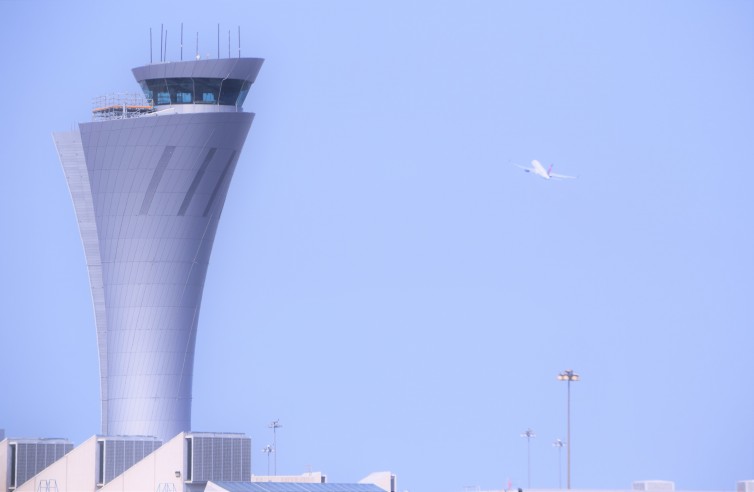
New construction for safety enhancements is expensive. SFO recently built a new tower. – Photo: John Nguyen | AirlineReporter
PFC revenue is treated differently than other revenue an airport earns; airports can’t spend PFC dollars on just anything. Eligible projects will preserve or enhance safety, security, and capacity of the national air transportation system, reduce noise from an airport that is part of the system, or provide opportunities for enhanced competition between or among air carriers.
As mentioned earlier, the PFC program is a hot topic right now in the aviation industry. The issue of PFC collections has come up with the FAA reauthorization debate that took place this past fall, and will likely come up again as the temporary FAA authorization approaches its end in March of 2016. Organizations like the American Association of Airport Executives (AAAE) and the Airports Council International – North American (ACI-NA) have been actively lobbying congress to get the PFC cap immediately adjusted up to $8.50 per segment from its current $4.50 limit, and then index that rate to inflation in subsequent years.
The airport community says the reason for this increase is clear. The PFC rate was last adjusted in 2000 to its current $4.50 limit. With the costs of goods and services ever increasing, the purchasing power of $4.50 now is about 2/3 of what it was in 2000. Think of it this way – for $4.50 you could have bought a venti Starbucks coffee back then, and now you’re only getting a tall cup. Or, more directly, the same construction project an airport could have fully funded back in 2000 can only be partially funded today using the same amount of money.
The argument has merit. A 2013 report card by the American Society of Civil Engineers gave a grade of ’œD’ for the conditions at America’s airports, and AirportsUnited reports that there is $75.7 billion dollar need for essential projects at both commercial and general aviation airports. Raising the PFC limit is one robust way airports could continue to construct the essential infrastructure improvements necessary to meet the growing passenger demand. An FAA-estimated one billion U.S. passenger enplanements per year by 2030 necessitates adequate infrastructure.
The airlines have a different take. ’œRaising the PFC cap will increase the overall cost of air travel for Americans, set back job growth, negatively impact travel and tourism through decreased demand, and could limit air service to small and rural communities,’ said Sharon Pinkerton, Senior Vice President, Legislative and Regulatory Policy at Airlines 4 America (A4A) (article here).
The airlines’ argument is essentially that demand for air travel is price elastic. Price elasticity is an economic concept that assumes higher prices hurt demand and lower prices encourage demand. In this case, by increasing the PFC rate – increasing the cost to fly – congress would depress the public’s demand for air travel.
The economic concept of price elasticity is a fair argument. When the total ticket price reaches a certain point a consumer may look to substitute air travel with another mode of travel, or she might cancel the trip altogether. To be fair, though, we must zoom out when applying that concept, since it’s not the individual fee she is evaluating, rather it’s the overall cost to fly.
The AAAE reports that airlines collected $3.5 billion in ’œbag fees’ in 2014 alone. AAAE ads that the airlines collected an additional $3 billion in reservation changes and cancellation fees in 2014. If we apply the same price elasticity argument to these fees, it would be fair to say that if the airlines lower these fees they will spark increased ticket sales. So, in light of that argument, why aren’t these fees being adjusted?
The reason is that the airlines are earning record profits in this booming economy, regardless of their fee structure. Right now, there is no demand problem, so there is no reason to give air travelers an economic incentive to fly. As we are all seeing, ticket sales are up, load factors are up, and the future looks bright. Airlines experienced a decade of beatings on their balance sheets, and are finally realizing some profitability.
But, as we all know, futures are subject to change. So, what does the future hold for this issue?
We are right in the middle of the public debate about whether to raise the PFC rate. The issue was not resolved when the FAA received its last federal authorization, but it is expected to be decided when this authorization runs out in March of 2016 and the FAA seeks its next authorization. The President is proposing an $8 rate, just shy of the $8.50 that the airport associations are lobbying for.
Airports support this position, but the airlines and their associations are pushing back and they have the financial and political backing to get an audience in congress. Time will tell what level we are able to invest in our airport infrastructure. Stay tuned.
This story was written by Jonathan Wilson for AirlineReporter. Jonathan is the Airport Manager for the Renton Municipal Airport in Renton, Washington and he also hosts The Terminal Podcast, an aviation industry podcast.
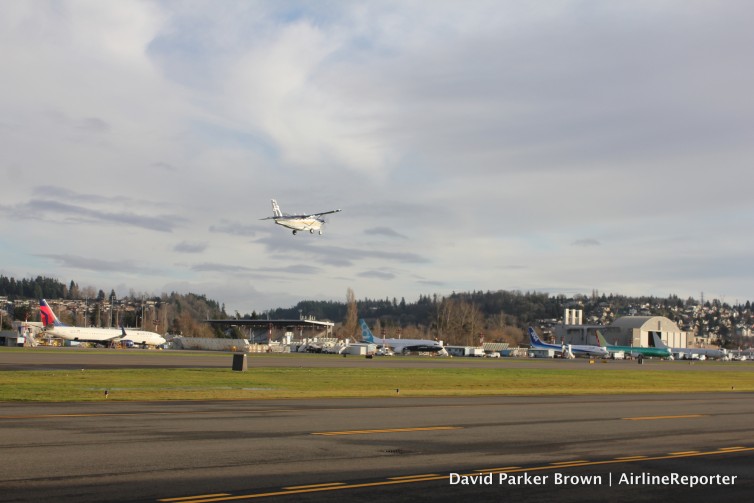
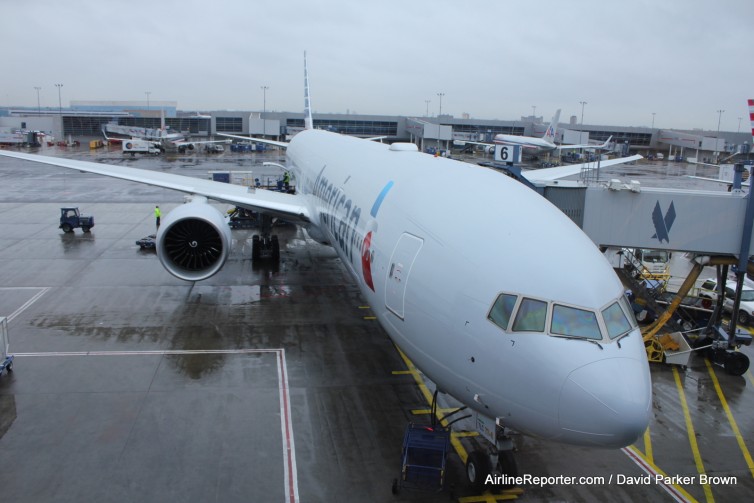
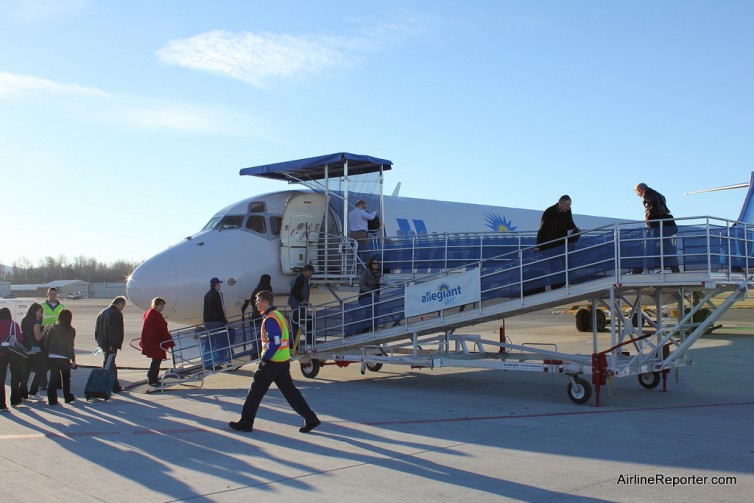
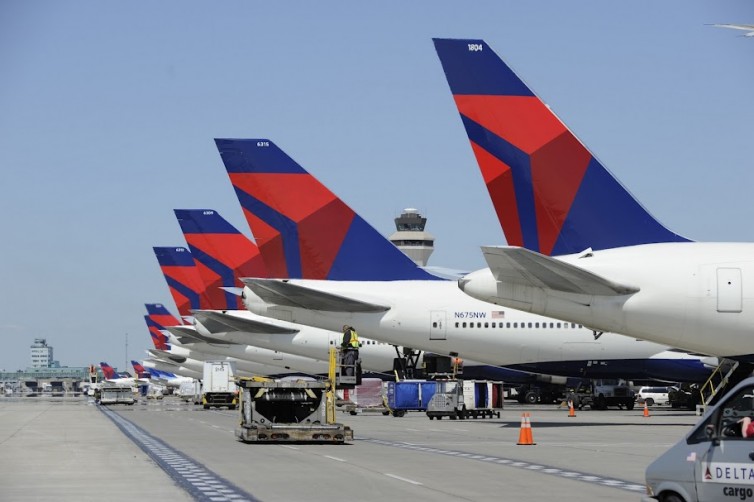
Airports already get phenomenal revenue from all of those sources listed by the writer. Fleece the public who have no input!! Typical!
Hi T,
Thanks for reading and for commenting! Well run airports should actively plan for revenue diversification. Planning large-scale, long-term projects that help the overall system function are getting significantly more expensive each year. The PFC is another tool that allows airports the ability to plan and execute on capacity and safety projects over time.
Jonathan Wilson
Well, you are NOT welcome! I, for one, am sick and damn tired of Governments, and NGO’s reaching into my pocket, with me not having any input or agreement. The airlines are right, air travel is price sensitive and it is becoming clearer that flying is once again competing with the automobile for travel, based on the added costs and inconvenience that we must endure. Cars are winning and air travel is losing. Plus, we see many projects that certainly appear to be over designed and engineered just because the funding comes to the operator from another involuntary tax.
BTW, I am a pilot and for many years, we have been paying user fees that were intended to go toward the support of the aviation infrastructure. What has happened to those “fees”? We never see an accountability for those and I certainly havent seen any for those fees that you are now trying to double.
Stay the hell out of my pocket
Hey Peter,
Sounds like you might have some bigger issues on how American democracy is structured than just airports and their fees. It would never work if the voting public had a say on every fee/tax/change that happened nationally or locally. We elect people that have certain stances and “trust” them to do the majority’s bidding. If the majority is not happy with their actions, then they are voted out.
Something, like a public airport, is going to have plenty of records that show where the fees/funding goes. I am sure you could do some research and easily find out where all your fees went. With so much pressure to cut taxes/funding, that goes to airports, they need to find funding elsewhere and sometimes that means the users of those airports.
David | AirlineReporter
David:
In fact I am quite familiar with how the Democracy works but, we live in what is supposed to be a Representative Republic and there’s he rub. The people who we elect, and re-elect, too often fail to remember that their job is to go to work and REPRESENT us as opposed to go there and legislate, often times against us. All to often this gets lost in the translation and we wind up with legislation which we have zero input on (and which they often times know nothing about before voting upon). And, now we now have a new branch of Government which is unelected and unaccountable, the Regulatory Branch which has the power of taxation and expropriation of our property. Yes, David, I do have larger problems than this PFC but it appeared to me as an opportunity to vent.
An additional element of our system is that the Federal Budget is fungible and as such, who knows whether the fees paid into this are really going to the reason for which they are imposed. This has been a rub on the Airways and Airport Trust Fund. While the money has been going into this fund for many years, every time some need arises that needs funding, the parties must then go to Congress to beg for the very money which was paid in for this purpose, often times getting denied. ATC upgrades as an example.
So, there, I am venting but I do appreciate the forum
Hi Peter,
Thanks for reading and taking the time to share your thoughts. Airports in the National Plan of Integrated Airport Systems are also able to apply for federal grant money known as Airport Improvement Program. AIP money comes from the Aviation and Airway Trust Fund – the place where those fees you pay as a pilot end up. Many airports get these grant dollars to fund infrastructure projects. Considering the unbelievably high costs associated with constructing infrastructure, airports rely on these grants to help offset the costs they would have to otherwise carry individually. The money that you and many other pilots have contributed has funded substantial projects that help make the system, in whole, work.
I am not familiar with the funding for your Renton airport, but I am sure that SEA is overfunded based on the reckless expenditures and generous salaries that the Port of Seattle grants.
Hi Tom,
Thank you for commenting. I am not sure how SEA’s funding works, other than I know they are financial self-sustaining. Renton is also a self-sustaining airport with no general fund tax dollars going to its operation. Renton, like all airports, isn’t looking to earn an economic profit, rather we strive to balance our expenses with revenue. In airport work, there is seemingly never enough to cover the huge capital costs it takes to keep the facility in a safe and serviceable condition. Renton is looking at multi-year capital expenses in the tens of millions for infrastructure projects. Larger commercial airports regularly line up capital programs that are in the nine digits. We aren’t a commercial airport, so we don’t collect any Passenger Facility Charges, but we do rely on FAA grant dollars to help offset larger construction projects.
David,
As an old-time airline guy (1979 – 1986) I for one would like to see all the airlines agree to quit “nickel and diming” the flying public. Don’t tell me it’s going to cost me $99 bucks to fly from SEA to SFO and then slide in another $50 in fee’s. Just raise the damn fare to what it really cost you to provide the service and make a reasonable profit. Sometimes I long for the good ol’ days of the CAB and regulated fares. ULCC are not doing anybody any good. Carriers have cut service to fill airplanes (I understand this is more efficient and profitable for them) but on the other hand they have relied on baggage fee’s and other charges to drive profits. They are not making money from operations, but from fee’s. They need to get operationally fit. The longer they prop themselves up on these fee structures and don’t do anything about inefficiencies in the operations side of the house, the more precarious their collective financial health will become.
Hi Vance,
Great comment! And, thank you for reading and contributing your thoughts.
Hey Vance,
I understand your viewpoint and it can be frustrating, especially when flying. I try to look it as a bit different and the ULCCs are allowing people who could never afford to fly — the ability to fly. Bags cost money to fly, food costs airlines to give to passengers. If I am not checking a bag, nor going to eat, why should I have to pay for it in my ticket? I think the airlines really messed up when they started the ala carte pricing model. It came across like “you will have to pay more now,” where some airlines tried that, but the ULCCs started with giving a base fare (that is very cheap) then you pay for what you use.
Letting the free market do its thing, passengers might say “I hate this,” but they aren’t voting that way with their pocket books. There might be a change in the future, but as long as passengers choose the cheapest fare, airlines will keep going for those customers in the US.
David | AirlineReporter
David, Good points, it has made what was once the province of the elite available to all. Thanks for all the great reporting this year, looking forward to reading more.
From my iPhone 5S on AT&T
“Sounds like you might have some bigger issues on how American democracy is structured than just airports and their fees. It would never work if the voting public had a say on every fee/tax/change that happened nationally or locally. We elect people that have certain stances and ”trust” them to do the majority”s bidding. If the majority is not happy with their actions, then they are voted out.”
That’s the rub here…most people are not educated on how the fee structure works, so basically your argument is a moot point.
I for one, am getting fed up with everyone trying to get their hands in my wallet. You sited just examples of the fee’s collected from passengers and how much the shortfall is from a report from the American Society of Civil Engineers (which would come at no surprise they fail the airports seeing how that report would benefit their industry) but how much are you collecting from the airlines from landing and gate fee’s. What happens to that money?
Also, how did the airports survive prior to 91? Now all of a sudden it a dire situation?
Seems to me that it is easier to collect a few dollars from the masses who are clueless, then to try and find other means.
Hi Al,
Thanks for commenting. I totally agree with you when you said that “most of the people are not educated on how the fee structure works.” My hope with writing this was not to take sides on the topic, but to lay out exactly what this fee is and why it’s a hot topic at the national level. I have found over the years that many people aren’t really sure how airports are run or how they are funded. When I tell people that I manage an airport I usually get a slow response and a follow up question about whether I do Air Traffic Control. If you have flown commercially recently, it’s likely you have paid this fee and not even known you were paying it. But an unaware customer who is paying this fee doesn’t benefit the Airport system. I would rather point at the new taxiway and tell them that’s where their $4.50 went than just keep silent and not offer an explanation. I find transparency and full information more persuasive to gaining customer support in the long run.
Greetings from Kansas City, Missouri. Tax me, please! Well, more accurately, fee me. My airport was designed with convenience in mind but in today’s post 9/11 era it is nothing more than a narrow prison. Yes, please tack on a few extra bucks so that we can build an airport to be proud of. The funding source for a new KCI (MCI) comes up often in a heated debate about what to do with our existing configuration. Make the people who use the thing pay for it, what a novel idea. Frequent flyer here. Happy to pay. If a PFC adjustment is what it takes, let’s make it happen already.
Hi JL,
Thanks for reading and offering up your thoughts!
I think we will be seeing significant public investment in airport terminal and capacity enhancing projects in the decade ahead. Moving 100 million people through Atlanta Hartsfield, for example, is no easy, or inexpensive, feat. User fees, like the PFC, is one way of funding these investments.
I know other countries highlight the “airport use fee” in airline fares. Whether that fee is paid by city and state governments, by the airlines, or the flying public through PFC’s, the cost of operating the airport will always be paid by somebody.
With that said, I’ve always wondered whether airports waste too much money. It is a rare event that I get to fly to an airport that is not under construction in one way or another. My nearest major airport spends 5 to 8 years every 10 to 12 years in major remodels. I have to wonder: are they constantly under construction because they have to spend the money, they can’t plan for the future well enough, or they cut corners and have to “fix” their mistakes? I think a good analysis of how airports spend this money is in order. As always, if there is government money to be had, there will be someone willing to create the problem to claim it.
Finally, airlines have no credibility in this argument. They charge several times more for WiFi and a piece of luggage than this fee. They spend large amounts of money for interiors to squeeze and extra row of seats. When they truly care to have the lowest fare possible or the fee equates to more than 10% of the fare, then they can talk.
Hi Al,
Thanks for reading and taking the time to add your comments!
The typical design life of airport buildings is around 35-40 years. Doesn’t mean they can’t “live” longer than that with proper maintenance, only that most aren’t designed to. For instance, the Tower at my airport was built in the early 1960s and is still going strong. That said, it feels like we are constantly updating and upgrading our buildings. As they age, things start failing. Roofs leak, HVAC systems stop, utilities break, etc. Also, as the passenger/tenant demand for space changes they may need to be reconfigured, expanded, or condensed.
Good info. However, unless I missed it, I didn’t see any mention of what the maximum “full flight” fee would be under the proposed changes. If it’s the same formula as the existing fees (max fees for no more than two segments, each way), then that would seem tolerable.
Additionally, I would also be curious to see how many airports actually charge less than the maximum amount. (I’m guessing “very few.”)
Hi John,
Thanks for reading and adding your comments!
I haven’t found mention of the upper max charge in the existing literature. My guess is that the charge would max out at a two or four multiple as it does now. Right now, it’s $4.50 with a max of $9 for one-way or $18 for round trip. I assume this change would make it $8.50 with a max of $17 for one-way or $34 for round trip.
There is a spreadsheet here from the FAA on who collects how much: http://www.faa.gov/airports/pfc/monthly_reports/media/airports.pdf
In scrolling through the list there are several airports that charge the max, but also many that charge $2 or $3 currently. I didn’t see any that still charge $1.
п»Ñ—StripSkunk – Mobile Sex Games Online: http://zworposowni.tk/tdctk?&cguuc=Ps5ZU8
The Best Dating Apps for 2019 (7463 sexual single women in your city): http://lesnabatma.tk/20zgd?&xjmqn=dkCW0FJnKz
Tinder for Adults: The 5 Best Senior Dating Sites (6966 single girls in your location): http://skepgofastba.tk/j910j?&aizvn=qfHJqQQv